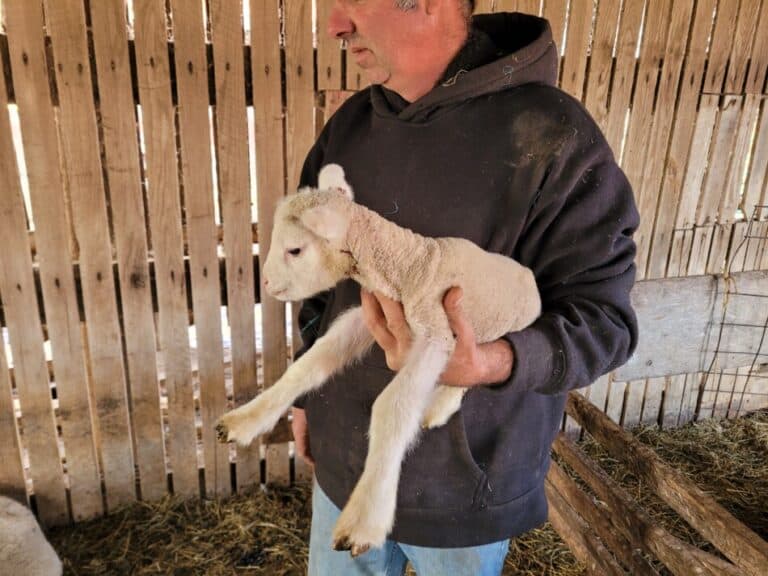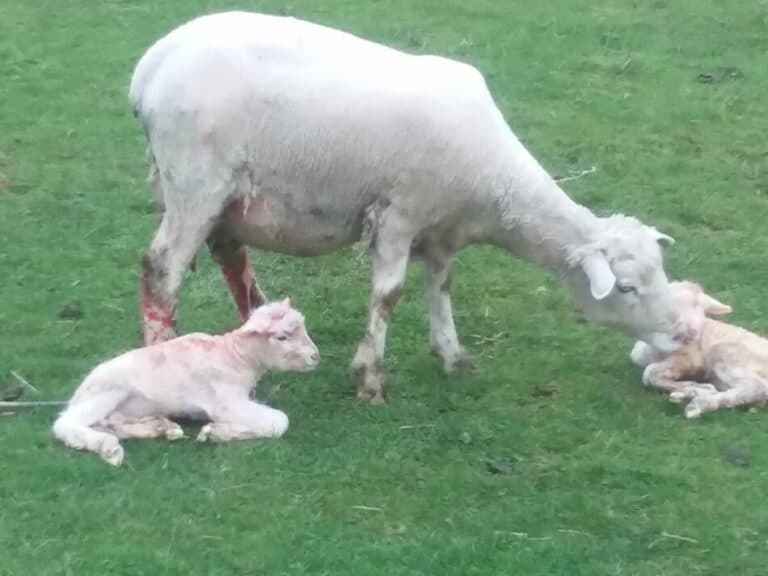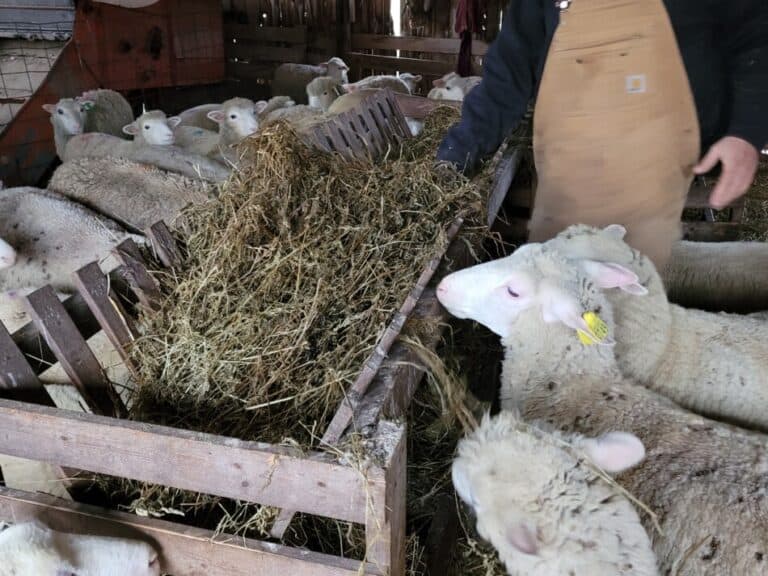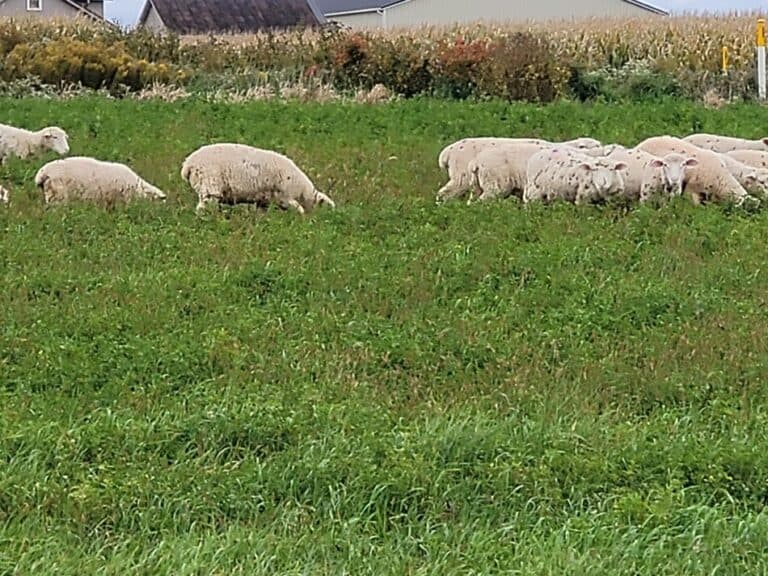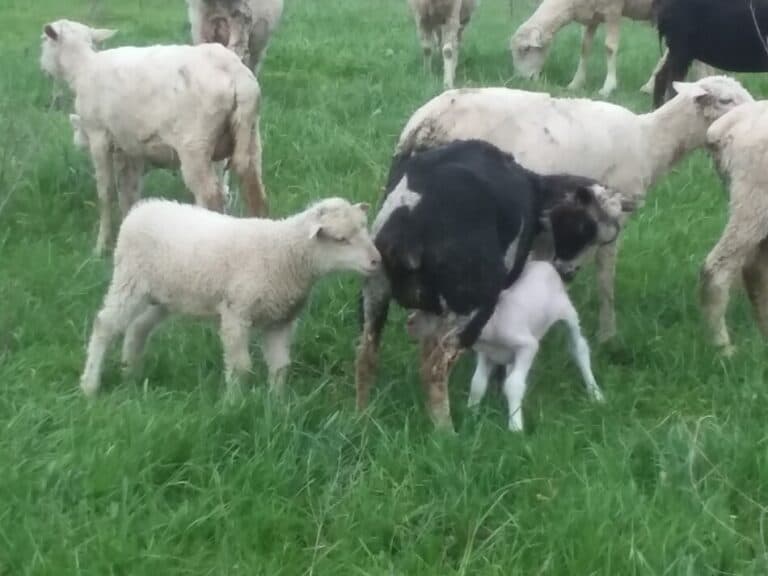8 Things You Should You Not Do When Handling Sheep
When you are getting into sheep, you may have come across tips or suggestions of things that you should be doing when you are around the flock, which is important information, of course.
Equally important are the things you should not do when handling sheep. What are the things to avoid doing when working with your sheep?
When you are handling sheep, you should not rush the sheep, expect the sheep to know what you want, be loud, lose your patience, move abruptly or forget to consider the sheep’s point of view.
Do not rush (hurry) the sheep
You must take your time with the sheep and work at a pace they are comfortable with.
Sheep love routine. If you are doing something out of the ordinary for them, they will be a little balky about it until they figure out what it is that you want and that it seems okay to them.
It’s easy to get into a hurry. The problems come when we rush the sheep and end up making things harder and usually taking longer than they would have if we had gone slowly to begin with.
Why Do Sheep Need Shepherds? gives some insight on how the shepherd helps the flock in both day to day activities as well as things sheep would have a hard time dealing with themselves, like predation.
Lambs make things take longer
If you have a group of weaned lambs, they will need more time from you than a group of ewes. It takes lambs longer to figure out what you want.
Before weaning, they just followed one of the ewes but now they are on their own and likely to be confused. Plan on extra time to get things done with a newly weaned group of lambs.
If the ewes have younger lambs, plan on everything taking extra time.
New lambs are slow and often make odd choices under pressure, so it’s best to move slow, take your time and you’ll end up actually getting done faster.

Do not lose your patience with sheep
Sheep can try your patience. They will learn to figure out what it is that you want them to do and if they do not like to do that thing, they will actively work to avoid it.
This can be frustrating, but should be expected. Since you know this type of behavior is coming from the sheep, plan on it and keep your temper when it happens.
For instance, if they do not want to go into the pen where you always catch them, then they will work on being anywhere but that pen until they feel they have to go in it.
We have a working chute that we only put the sheep through a few times a year, but all of the ewes have been through it and most of the ewe lambs, as well.
Sometimes they act like they have no idea what that thing is and no way are they going in there! That’s frustrating, since we know the sheep are familiar with it.
Until they decide to go through the chute, we just have to give them more time and make sure that there is nothing that looks scary in there and that the sheep can clearly see the exit.
Is Sheep Keeping Easy? Answers from a full time shepherd goes over some of the day to day work of caring for sheep.
Not having your set up ready and sheep friendly
Have your set up ready before you get started and look things over from a sheep’s perspective to remove anything that might look questionable to them.
This is one of those times when putting extra thought into your set up pays off. This way you’ll avoid problems rather than having to deal with the sheep refusals or delays from confusion.
For instance, if you have to take sheep down the driveway a bit, like from a pasture up to the barn, make sure you do not have anything, like your car, parked in the driveway.
Even though they could walk around the car and maybe have been up the driveway numerous times, right now, the way up to the barn is not obvious, at least, not to them. Let me explain.
Take a second and stand behind the car. Now, squat down to sheep level. What do you see? Just a lot of car, not the path up to the barn, that they would happily take if they saw it.
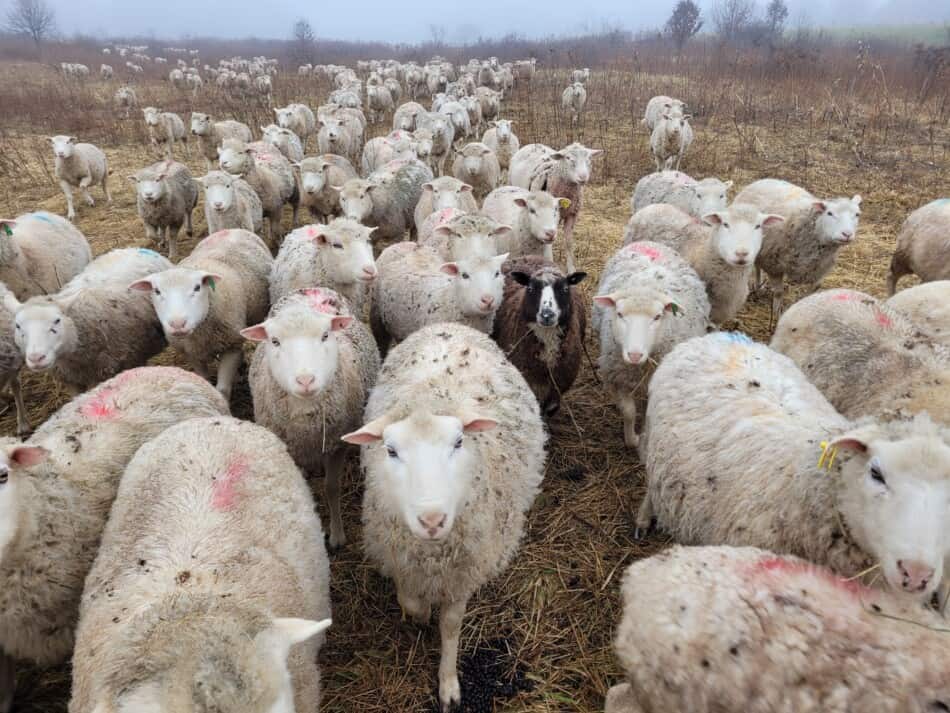
Do not forget about the sheep’s point of view
Quite often, if you stop to think about what you are doing or asking the sheep to do, from a livestock point of view, a few of the problems will become clear.
For instance, let’s say you are asking the sheep to go into the barn from the pasture, but you are pressuring them from the back, that’s the first sign to the sheep that something is up.
Next, when you look at the barn entrance from more of a sheep point of view, the entrance looks dark and you have to go through mud to get there. Why would the sheep want to go in there?
An easier way to get these sheep into the barn is to have the entrance well lit, make the footing solid and have a snack of some sort that they like in that pen. A little bit of grain does wonders here.
Other problems we see are the things we bring with us, like a bag with some supplies in it, or your extra jacket that you hang on the side of the pen.
To you, it is nothing and you don’t even think about it. To them the “new” things are different and are distracting the sheep.
The problem with things being distracting is that anything new is automatically scary to a sheep. The area has to look good to them and be put together in a way that makes them want to move through it.
Set up your area so the sheep want to move through it
The other aspect of the sheep’s point of view is that certain ways of moving around make sense to sheep and other ways do not.
For instance, if you can set up your pen that you want them to go into so it looks like they are rejoining the group when they go in, it will be easier to get them to do it.
If you are still not sure what is bothering the sheep, consider reading some of Dr. Temple Grandin’s work and set up your sheep handling according to her suggestions.
Make it obvious
Make the gate opening, or where ever you want the sheep to go through, obvious.
Sometimes a gate can be open yet from the angle the sheep are coming from, it looks like it’s still closed. Odd or tight corners seem to be a common culprit for this problem, at least for us.
There are times when you just have to do your best and give the sheep time to see the opening, but anytime you can adjust something to make the way you want the flock to go obvious, it’s well worth the extra time on the front end, since it saves you frustration later.
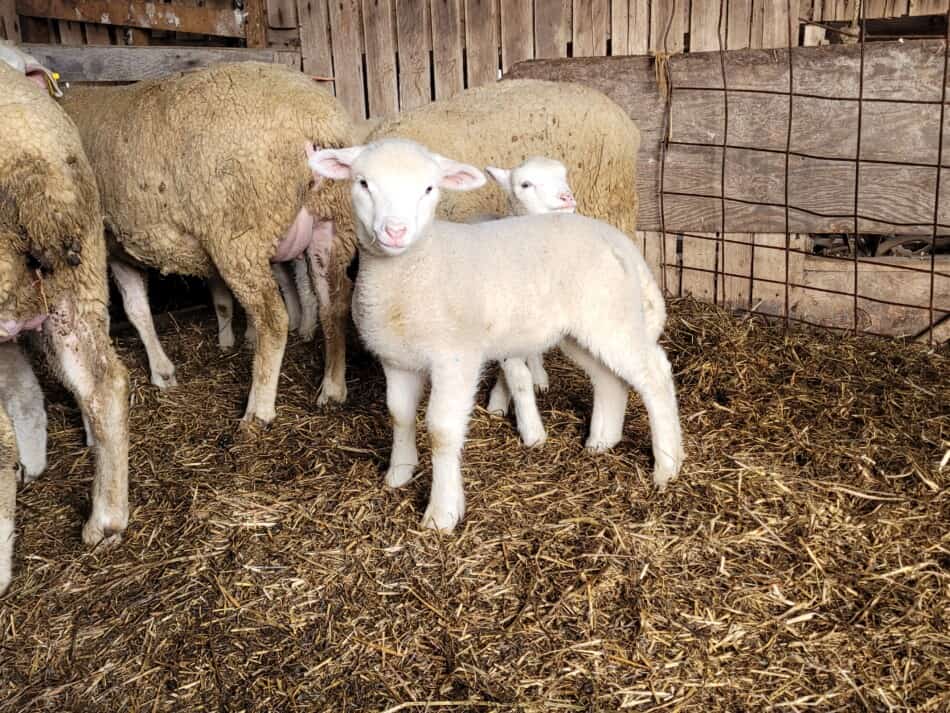
Do not be louder than needed
If you are new to sheep and go into all this thinking that hooping and hollering is how you get animals to move, it’s time to reconsider. Quiet confidence and clarity are what make animals move, not yelling.
I know that sometimes you have to shout to be heard, but keeping a softer tone of voice, even when talking to other people, not just the sheep, will help them to stay more calm.
The other thing is that if you normally talk a lot while with the sheep, keep talking. If they are normally handled with little noise, try to be quieter while doing your work. Animals like what they are used to.
Do not move abruptly
Sheep do not like jerky, out of nowhere movements. Be smooth and calm and deliberate to get them to move calmly. Getting loud or frantic with your movements just keeps their attention on you.
This may sound like what you want, but it actually isn’t, what you are trying to do is put a bit of pressure on them, by standing close to them to get them to move away from you.
If you are frantically moving, you are having them focus on you, rather than giving them the opportunity to think about ways to relieve the pressure by going into the pen or gateway like you want them to.
Do not assume the sheep know what you want
Do not assume the sheep know what you want. This is somewhat like the sheep’s point of view idea with more of an emphasis on your part of getting things done with the flock.
Sheep do not know what you want, they just know what is routine and how to do the things that benefit them the most.
When you throw them off of their routine, they get nervous and when they get nervous, they stop thinking about their options and this is where your problems start.
Is the next move for the sheep obvious?
You have to set up the situation so that it is glaringly obvious for the sheep to do what you want, then wait for them to see the opportunity.
For instance, if you have the gate open, look at the opening from where the sheep are standing.
Can they clearly see that it is open? As crazy as it sounds, just because you opened the gate does not mean it is easy for the sheep to see that they can go through.
This is easily seen when sheep are coming up perpendicular to the opening, all they see is the fence in front of them. The open gate will not be visible until they are right on top of it.
We have a few gate openings at odd angles that are hard to see when they are open, until the sheep get right up on the corner, which they don’t want to go into because it looks like a trap.
It’s not a trap, since the gate is open, but until they see it and the first one or two walk through, to the sheep it looks like a spot they do not want to be.
This is especially true if this is not a gate they go through frequently, it may take them a while to realize that it is now open if they didn’t see you open it.
Don’t forget your safety
Whenever you work with your sheep, you are the brains of the operation. It is your job to think things through and work with the sheep in as safe a manner as possible.
Be mindful of where you are positioning yourself in relationship to the flock and what you are asking the sheep to do.
It’s easy to think of sheep as small and harmless, but we forget that when a flock of small and harmless are pushing hard to get somewhere, they can have a lot of power!
The situations where you can get hurt, at least from our experience, are in close contact activities with the ewes, meaning getting hurt was an accident, not the result of something like a headbutting ram.
For example, my husband and I both have been knocked down by sheep passing by in a tight group and their wool grabs your pants then down you go. Same goes for hair sheep, I was tripped up by Katahdins!
The sheep were in a rush to get somewhere, usually feed, and we were in the way. While none of this is malicious on the part of the sheep, it can still end up with you hurt. Be careful out there.
Using Sheep Behaviour To Your Advantage When Designing Handling Facilities is an Ontario.ca publication that covers quite a few of the basics and gives some useful diagrams.
